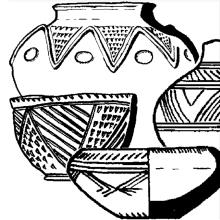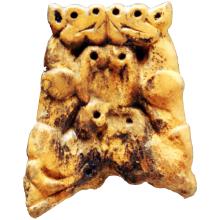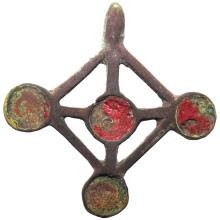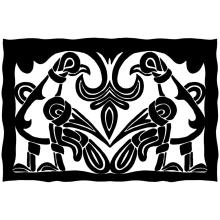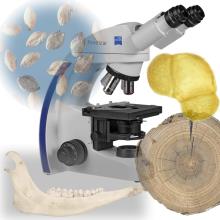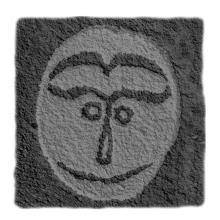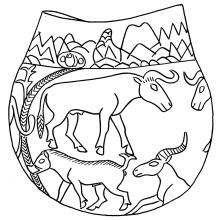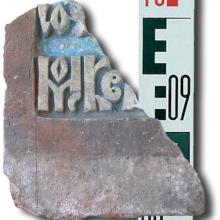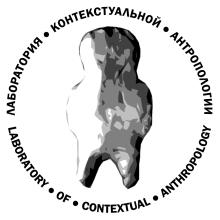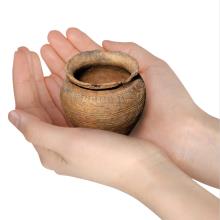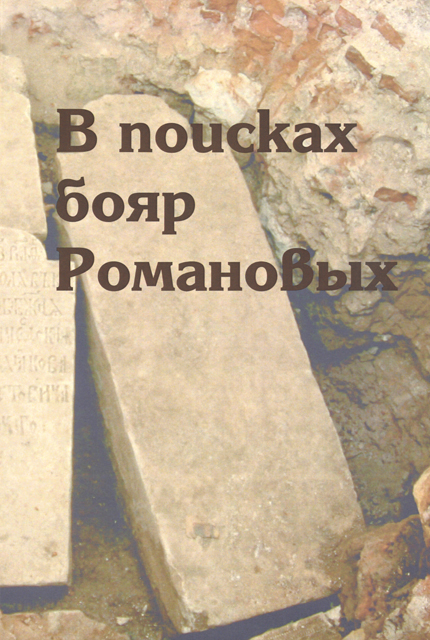 Новоспасский монастырь в XVI в. стал усыпальницей боярского рода Захарьиных-Юрьевых-Романовых. Многочисленные внуки Романа Юрьевича Захарьина, дети Никиты Романовича, образовали в последней трети XVI в. клан «Никитичей», после смерти царя Федора Ивановича вступивший в борьбу за царский престол. Борис Годунов подверг их жестокой опале, но после вступления на престол Лжедмитрия останки умерших перевезли из мест ссылки в родовой монастырь, позже построив поминальный храм Знамения, в конце XVIII в. целиком перестроенный. В нем почитали особую Палатку Никитичей. На ее участке экспедиция Института археологии РАН в 2014 г. изучила каменные саркофаги, надгробия, вещи и костные останки. Анализ письменных источников и сохранившиеся надписи указали на погребения членов семьи князей Черкасских (близких родственников бояр Романовых) и родоначальницы этой ветви, княгини М.Н. Черкасской (Романовой). Междисциплинарное исследование позволило решить вопросы идентификации и сделать заключение об образе и качестве жизни представителей боярских семей, стоявших в XVI – начале XVII в. у истоков династии Романовых.
Новоспасский монастырь в XVI в. стал усыпальницей боярского рода Захарьиных-Юрьевых-Романовых. Многочисленные внуки Романа Юрьевича Захарьина, дети Никиты Романовича, образовали в последней трети XVI в. клан «Никитичей», после смерти царя Федора Ивановича вступивший в борьбу за царский престол. Борис Годунов подверг их жестокой опале, но после вступления на престол Лжедмитрия останки умерших перевезли из мест ссылки в родовой монастырь, позже построив поминальный храм Знамения, в конце XVIII в. целиком перестроенный. В нем почитали особую Палатку Никитичей. На ее участке экспедиция Института археологии РАН в 2014 г. изучила каменные саркофаги, надгробия, вещи и костные останки. Анализ письменных источников и сохранившиеся надписи указали на погребения членов семьи князей Черкасских (близких родственников бояр Романовых) и родоначальницы этой ветви, княгини М.Н. Черкасской (Романовой). Междисциплинарное исследование позволило решить вопросы идентификации и сделать заключение об образе и качестве жизни представителей боярских семей, стоявших в XVI – начале XVII в. у истоков династии Романовых.
Since the 16th c. the New Monastery of the Savior became the burial ground of the Romanov boyar family. The numerous descendants of Roman Zacharyin established the powerful clan of «Nikitichi» (the children of Nikita) at the end of the 16th c. After the death of the Tzar Feodor they were disgraced, imprisoned and exiled. But after the accession of False Dmitry the 1st their remains were transferred from the Northern Russia to their ancestral monastery of the Savior. The special chapel was erected over the tombs, fully reconstructed in the late 18th c. In 2014 the excavations of the Institute of archaeology RAS (under the supervision of Leonid Belyaev) discovered the stone sarcophagi, tomb stones, artifacts and human remains. The epigraphy and the written sources indicated burials of the Princely family of Cherkasy, the close relatives of the Romanovs, including the founder of this brunch Princess Marfa Romanova. The multidisciplinary study allowed to identify remains and to research life style and life quality of the representatives of the aristocratic families of the 16th and 17th cc.



